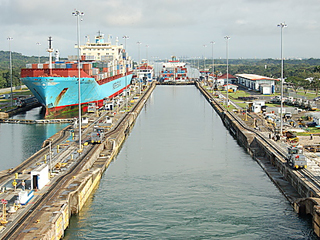Ireland’s port traffic remains strong in 2016 despite challenging trading environment

The 14th edition of the Irish Maritime Transport Economist, a report produced by the Irish Maritime Development Office (IMDO) on Ireland’s maritime freight industry, was launched today in the Gibson Hotel, Dublin.
The report shows that in 2016, total port traffic increased by 2%, with growth driven predominantly by unitised trade, Roll-on/Roll-off (RoRo) and Lift-on/Lift-off (LoLo) traffic, both of which grew by 7% in 2016. The report also highlights an 11% increase in the number of cruise vessel calls to Irish ports, with 274 calls recorded in 2016, while passenger numbers between the island of Ireland, Great Britain and continental Europe declined by 2.6% to 4.3 million passengers in 2016.
Key figures
· 2% increase in total port traffic recorded in 2016
· 7% increase in RoRo traffic to 1,073,403 freight units
· 7% increase in LoLo traffic to 916,852 TEUs*
· 5% decline in total bulk traffic, driven by reduced demand for oil, coal and other bulk commodities
· Overall passenger traffic declined 2.6% in 2016, but 11% increase in cruise vessel calls recorded
Freight traffic
The growth recorded in unitised trade, which is closely correlated with consumer demand, points to increased consumer confidence in the Irish economy in 2016. With over 80% of RoRo traffic moving between the Republic of Ireland and the United Kingdom, the growth in RoRo traffic recorded in 2016 is also a reliable proxy for the performance of trade between both economies, despite economic and political uncertainty in 2016.
In contrast, total bulk traffic, comprising dry bulk, liquid bulk and break bulk, fell by 5% in 2016 to 28.5 million tonnes. Dry bulk volumes fell by 1% to 15.8 million tonnes and liquid bulk volumes fell by 9% to 11.3 million tonnes in 2016, with demand for commodities in these categories such as animal feeds, fertilizer, coal and oil affected by relatively warm and dry weather conditions. Break bulk traffic fell by 5% to 1.4 million tonnes, mainly driven by a 40% decrease in shipment of refuse derived fuel. When these shipments are excluded, break bulk traffic grew by 2% in 2016, with increases recorded in the shipment of commodities such as cement, which underpin growth in the Irish construction sector.
Passenger traffic
Figures for 2016 show a decline of 2.6% in passenger numbers between the island of Ireland, Great Britain and continental Europe to 4.3 million passengers. The largest decline in passenger traffic was recorded between the Republic of Ireland and Great Britain, with a decline in passenger numbers of 5% to 2.2 million recorded in 2016. This decline in sea passenger traffic is in contract to strong growth in air passenger traffic in 2016. Car volumes to and from the island of Ireland also decreased by 1% in 2016, to 1.28 million.
Ireland’s cruise industry, however, recorded growth in 2016 with an 11% increase in vessel calls in 2016. 274 vessels called to Irish ports in 2016 carrying 442,304 passengers and crew. Dublin Port remained Ireland’s busiest cruise terminal with 109 vessel calls carrying 159,124 passengers and crew, a 7% increase in passenger traffic from 2015.
Speaking at the launch of the 14th edition of the Irish Maritime Transport Economist, Liam Lacey, Director, IMDO, said: “As a maritime nation and an economy, we are heavily dependent on seaborne transport to link Ireland to world markets. While 2016 was a challenging year for business, the overall increase in port traffic and strong growth in unitised trade demonstrates the resilience of Ireland’s maritime industry in continuing to meet the needs of our growing economy. While the impact of Brexit on the trading environment is not immediately apparent in bilateral trade volumes recorded between Ireland and the UK in the second half of 2016, our maritime industry is influenced by factors such as exchange rate fluctuations that will continue to evolve in 2017.”
Source: Irish Maritime Development Office
HEADLINES
- Do shipping markets want Biden or Trump for the win?
- All 18 crew safe after fire on Japanese-owned tanker off Singapore
- Singapore launching $44m co-investment initiative for maritime tech start-ups
- Cosco debuts Global Shipping Industry Chain Cooperation Initiative
- US warns of more shipping sanctions
- China continues seaport consolidation as Dalian offer goes unconditional